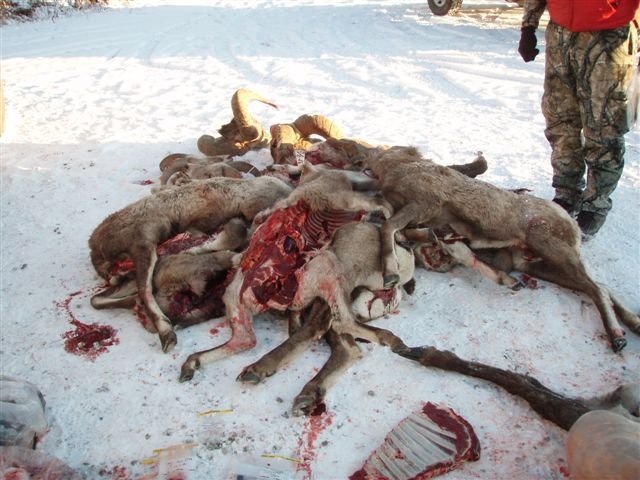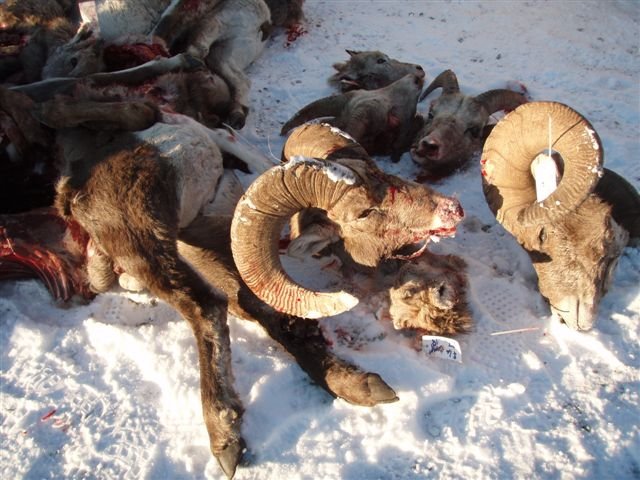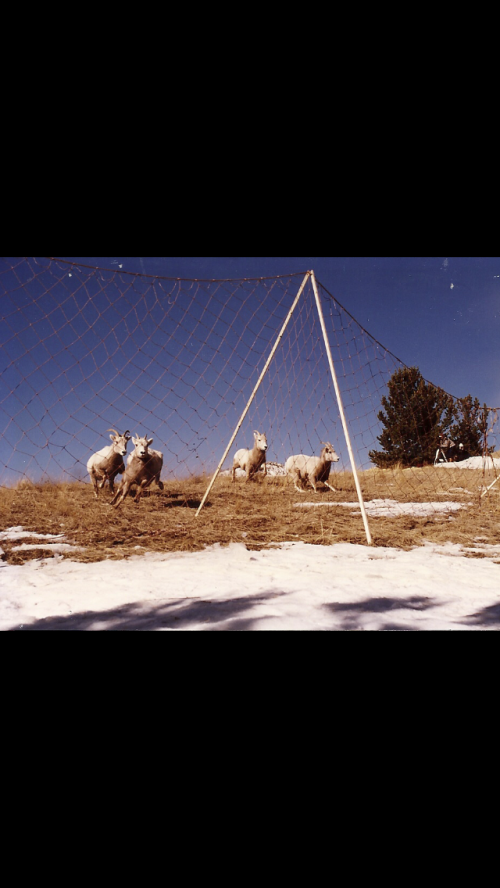Navigation
Install the app
How to install the app on iOS
Follow along with the video below to see how to install our site as a web app on your home screen.
Note: This feature may not be available in some browsers.
More options
You are using an out of date browser. It may not display this or other websites correctly.
You should upgrade or use an alternative browser.
You should upgrade or use an alternative browser.
Montana MSG Results
- Thread starter Carnage2011
- Start date
Frequently Banned Troll
Well-known member
Spanish Peaks was unlimited through 1999. It closed completely that year, but opened again as limited quota in 2008.
Disease outbreak to warrant shutting it down for that long?Spanish Peaks was unlimited through 1999. It closed completely that year, but opened again as limited quota in 2008.
brocksw
Well-known member
Any long term data on the impacts of pneumonia outbreaks on sheep populations in MT? The Tendoys come to mind, but I thought there was some other herds that have been significantly impacted by pneumonia.
ETA:
“Our work suggests that the presence of pathogens associated with respiratory disease in bighorn sheep is insufficient on its own to account for the realized level of variation in population dynamics...Bighorn sheep management and restoration should focus on advancing ecological understanding of the species, rather than assume disease dynamics are predominately responsible for population trajectories."

 billingsgazette.com
billingsgazette.com
ETA:
“Our work suggests that the presence of pathogens associated with respiratory disease in bighorn sheep is insufficient on its own to account for the realized level of variation in population dynamics...Bighorn sheep management and restoration should focus on advancing ecological understanding of the species, rather than assume disease dynamics are predominately responsible for population trajectories."

FWP launching studies to understand Montana's bighorn sheep populations
The Montana Department of Fish, Wildlife & Parks is undertaking a series of studies into bighorn sheep while cooperating with state universities, conservation and ag groups.
Last edited:
Not sure if there is long term data. A few herds that were heavily impacted come to mind. I admit I didn't give it much thought.Any long term data on the impacts of pneumonia outbreaks on sheep populations in MT? The Tendoys come to mind, but I thought there was some other herds that have been significantly impacted by pneumonia.
Henry Mountains herd
Elkhorn herd
Rock creek herd
Gates of the Mountains herd
Melrose herd
Carnage2011
Well-known member
What is the status of the heard up around Bonner? I see those sheep a fair amount in the summer but I assume they are struggling since there is no tag for the area.
brocksw
Well-known member
"Consistent with prior work on many of these same populations (Butler et al. 2018), we found that the presence of M. ovipneumoniae was not a sufficient factor in limiting population growth. Despite our conclusion that populations hosting M. ovipneumoniae and Pasteurellacea had an overall lower median lamb survival than those that hosted Pasteurellacea alone, the ranges of lamb survival estimates for both types of populations were very similar and included values that resulted in positive population growth rates and reversals of declining population trajectories, regardless of ewe survival rate values. If variation in offspring survival was not well-explained by the composition of pathogen communities, then ecologicaland environmental factors have to be the key players either independent of resident pathogen communities or interacting with pathogen communities to impact disease expression.
Overall, our work strongly suggests that multiple ecological factors are important drivers of population dynamics with similar or stronger effects on bighorn sheep population trajectories as compared to disease epizootics (short of all-age die-offs), and thus, bighorn sheep management and restoration should focus on advancing ecological understanding of the species, rather than assume disease dynamics are predominately responsible for population trajectories."
Overall, our work strongly suggests that multiple ecological factors are important drivers of population dynamics with similar or stronger effects on bighorn sheep population trajectories as compared to disease epizootics (short of all-age die-offs), and thus, bighorn sheep management and restoration should focus on advancing ecological understanding of the species, rather than assume disease dynamics are predominately responsible for population trajectories."
BigHornRam
Well-known member
Mountain lion predation of lambs and overharvest of rams by hunters, warranted the shut down.Disease outbreak to warrant shutting it down for that long?
[l]
I killed a ewe out of there in 2003 when I was 12 years old and at that time there were sheep everywhere. I don’t know what their numbers are right now, but they had a die off. those sheep used to, I believe, connect all the way over Bonner mountain to the sheep, along the freeway at rock Creek, through beavertail Hill, and down to Bearmouth, which connected with the population win 210 and 216 up rock cr, which connected to the Anaconda sheep. Which is why about 10 to 15 years ago when there was a die off it hit all of them.
I don’t know this for sure, but I wouldn’t be surprised if the Weaver ranch’s domestic sheep at the Bearmouth area had something to do with it. When I was a kid, the rams used to fight in our driveway at Beavertail Hill during the rut. My mom hasn’t seen a sheep in at least 10 years. I did, however, hear a rumor that somebody saw some at Bearmouth two years ago.
What is the status of the heard up around Bonner? I see those sheep a fair amount in the summer but I assume they are struggling since there is no tag for the area.
I killed a ewe out of there in 2003 when I was 12 years old and at that time there were sheep everywhere. I don’t know what their numbers are right now, but they had a die off. those sheep used to, I believe, connect all the way over Bonner mountain to the sheep, along the freeway at rock Creek, through beavertail Hill, and down to Bearmouth, which connected with the population win 210 and 216 up rock cr, which connected to the Anaconda sheep. Which is why about 10 to 15 years ago when there was a die off it hit all of them.
I don’t know this for sure, but I wouldn’t be surprised if the Weaver ranch’s domestic sheep at the Bearmouth area had something to do with it. When I was a kid, the rams used to fight in our driveway at Beavertail Hill during the rut. My mom hasn’t seen a sheep in at least 10 years. I did, however, hear a rumor that somebody saw some at Bearmouth two years ago.
BigHornRam
Well-known member
The Bonner herd had a tendency to disperse in all directions. I've heard of rams being spotted in Lincoln, Seeley, and close to Arlee. Highway mortality was extremely high, and lamb recruitment has remained poor since the die off in 2009/2010.
Southern Elk
Well-known member
The newly released herd in the Little Belts was hurting last I heard. Anyone have an update on them?

 www.krtv.com
www.krtv.com

Several bighorn sheep in the Little Belt Mountains have died from pneumonia
Several other bighorn sheep in the same herd have also exhibited symptoms of respiratory disease.
BigHornRam
Well-known member
2nd transplant had a couple sheep carrying pathogens that spread to others in the herd. Lion predation is impacting what is left of the herd. Biologist is working with local houndsmen to thin out lions with some good results.The newly released herd in the Little Belts was hurting last I heard. Anyone have an update on them?

Several bighorn sheep in the Little Belt Mountains have died from pneumonia
Several other bighorn sheep in the same herd have also exhibited symptoms of respiratory disease.www.krtv.com
From the Gazette article.....
"For example, a herd transplanted to the Little Belt Mountains in 2021 suffered from a pneumonia outbreak, apparently without coming into contact with domestic sheep. The source herd, which lives in the Missouri River Breaks, carry the bacteria but seem healthy. What’s more, the strain that killed the Little Belt bighorns is different from that found in the source herd.
Part of the problem with transplanting sheep is that there’s no quick test to see if an animal is a carrier, Gude noted. Even though the sheep were tested before being transplanted, the test only reveals the dominant bacteria. The killer bacteria may already infect the sheep but is not flourishing, he speculated.
One theory being tested is whether dogs can be trained to sniff out the bacteria in live bighorns to alert biologists transplanting them. Another possibility is training dogs to keep domestic and wild sheep separated to avoid transferring bacteria.
The Little Belt herd has also suffered from mountain lion kills, so FWP is working with houndsmen to reduce lion populations in areas the bighorn sheep utilize."
Last edited:
Nameless Range
Well-known member
When I lived in Bonner in the old Stimson homes along the highway (2007-2011), there were sheep behind our houses on the TNC property all the time.
The Elkhorns herd is one I am kind of intrigued by. They got pneumonia 15 years ago and were reduced down to a couple dozen, but here we are today and they are still holding on, there's a permit to hunt one of them (any ram), and they seem to be reproducing. I wish we would lean into them a bit more, but I get the hesitancy seeing how they were obliterated years ago. When one hobby farm can undo hundreds of thousands of dollars, it's hard to see a way forward.
The Elkhorns herd is one I am kind of intrigued by. They got pneumonia 15 years ago and were reduced down to a couple dozen, but here we are today and they are still holding on, there's a permit to hunt one of them (any ram), and they seem to be reproducing. I wish we would lean into them a bit more, but I get the hesitancy seeing how they were obliterated years ago. When one hobby farm can undo hundreds of thousands of dollars, it's hard to see a way forward.
BigHornRam
Well-known member
Biggest ram I've ever seen was a loner up on Wisherd ridge a year before the die off. They live in the timber and can be difficult to spot most of the time.
BigHornRam
Well-known member
The 216 sheep also intermingle with the Skalkaho and East Fork herds. The East Fork had a whole herd die off the same year as Bonner and Rock creek.[l]
I killed a ewe out of there in 2003 when I was 12 years old and at that time there were sheep everywhere. I don’t know what their numbers are right now, but they had a die off. those sheep used to, I believe, connect all the way over Bonner mountain to the sheep, along the freeway at rock Creek, through beavertail Hill, and down to Bearmouth, which connected with the population win 210 and 216 up rock cr, which connected to the Anaconda sheep. Which is why about 10 to 15 years ago when there was a die off it hit all of them.
I don’t know this for sure, but I wouldn’t be surprised if the Weaver ranch’s domestic sheep at the Bearmouth area had something to do with it. When I was a kid, the rams used to fight in our driveway at Beavertail Hill during the rut. My mom hasn’t seen a sheep in at least 10 years. I did, however, hear a rumor that somebody saw some at Bearmouth two years ago.
Frequently Banned Troll
Well-known member
Who cares about MSG in MT. Bring on the Utah results.
Similar threads
- Replies
- 143
- Views
- 13K
- Replies
- 156
- Views
- 18K
- Replies
- 183
- Views
- 17K







